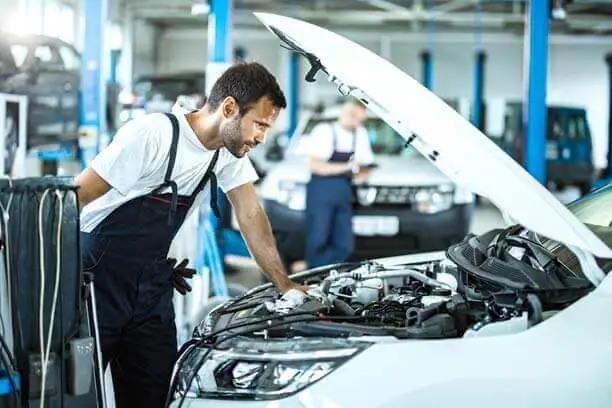All Categories
Featured
When your automobile calls for substitutes or repair services, one of the most crucial decisions you'll require to make is whether to utilize Original Tools Producer (OEM) parts or aftermarket components. Both options feature their very own advantages and downsides, and selecting the right one can dramatically influence the performance, longevity, and price of your vehicle fixing. Right here's a guide to help you make a notified decision between OEM and aftermarket components.
![]()
What Are OEM Parts? OEM parts are made by the very same producer that created the original elements in your vehicle when it was built. These components are designed particularly for your make and model, guaranteeing a perfect fit and matching the specifications of the initial elements. As an example, if you possess a Ford lorry, an OEM part would be made by Ford or an accredited Ford provider.
Among the main advantages of OEM parts is their assured high quality and compatibility. Because they are made to satisfy the producer's precise standards, OEM components are more probable to function well and last as lengthy as the original component. In a lot of cases, they feature guarantees that guarantee your fulfillment. Furthermore, utilizing OEM components can aid preserve the resale value of your automobile because potential buyers commonly like cars that have been repaired with initial elements.
What Are Aftermarket Parts? Aftermarket parts are produced by third-party makers and are created to fit a selection of cars, not simply one certain make or model. These components are often more economical than OEM components due to the fact that they are created in higher volumes, and the makers don't birth the very same development costs as the original producers.
While aftermarket components are made to be suitable with many lorries, the high quality can vary depending on the brand name and manufacturer. Some aftermarket parts are premium and supply similar performance to OEM parts, while others may be made with less costly materials and may not perform too or last as long.
![]()
Benefits of OEM Components. Surefire High Quality and Fit: Considering that OEM components are made by the vehicle's manufacturer, they're ensured to fulfill the exact specs of the original parts. This ensures an accurate fit and optimum efficiency. Warranty: OEM components usually come with a maker's warranty, using comfort and defense versus flaws. Resale Value: Automobiles repaired with OEM parts are frequently much more appealing to buyers, which can help keep or perhaps enhance the resale worth of your automobile. Durability: OEM components are usually constructed to last as long as the original components, indicating you might have fewer problems and substitutes in the future. Benefits of Aftermarket Components. Reduced Price: Aftermarket parts are typically much more economical than OEM components, making them an eye-catching choice for those seeking to save money on repair work. Selection: There is a bigger selection of aftermarket components readily available, including updated or performance-enhancing options that may not be readily available in OEM parts. This is particularly attractive to vehicle enthusiasts that intend to change their car. Accessibility: Aftermarket components are commonly available and typically less complicated to find than OEM components, which can be particularly handy for older lorries or hard-to-find elements. Technology: Numerous aftermarket components are created with renovations or added attributes that boost the car's performance or appearance, such as high-performance brake pads or exhaust systems. Disadvantages of OEM Parts. Higher Expense: OEM parts are commonly more expensive than aftermarket alternatives, which can be a considerable element if you get on a spending plan. Minimal Options: OEM components might use less alternatives for modification or efficiency upgrades compared to aftermarket parts. Disadvantages of Aftermarket Components. Irregular Quality: Aftermarket components can vary extensively in regards to high quality. Some manufacturers create components that execute equally as well as OEM parts, while others may reduce corners to save costs. Fitment Issues: While aftermarket components are made to fit most lorries, they may not always be a precise match for your car, resulting in prospective compatibility issues. Service Warranty Limitations: Aftermarket parts may not feature guarantees or might offer limited protection, which can cause extra expenses if the component fails prematurely. Exactly how to Pick Between OEM and Aftermarket Components. When deciding between OEM and aftermarket parts, there are a number of variables to consider:
Budget plan: If expense is a primary problem, aftermarket parts might be the better choice as a result of their reduced rate. Nonetheless, if you can manage it and are worried regarding long-term dependability, OEM components may be worth the financial investment. Vehicle Age and Condition: If you have a newer lorry that's still under guarantee, utilizing OEM components might be the most effective selection to keep the auto's honesty and preserve its resale value. For older vehicles, aftermarket components can be a cost-effective remedy to keep the car running. Efficiency and Modification: If you want improving your automobile's efficiency or appearance, aftermarket components offer even more variety and choices for upgrades. Producer Referrals: Some car makers might suggest or need the use of OEM parts for details repair work, particularly for safety-related components like airbags or brake systems. Always consult your owner's handbook or a professional mechanic for support. Conclusion. Ultimately, the decision in between OEM and aftermarket components depends on your details requirements, choices, and spending plan. While OEM parts provide a guaranteed fit and greater quality, aftermarket components can offer price financial savings and a wider series of choices. By thoroughly thinking about aspects like expense, lorry age, and desired efficiency, you can make the best selection for your car fixings, making certain that your auto remains in great working problem without breaking the financial institution.

What Are OEM Parts? OEM parts are made by the very same producer that created the original elements in your vehicle when it was built. These components are designed particularly for your make and model, guaranteeing a perfect fit and matching the specifications of the initial elements. As an example, if you possess a Ford lorry, an OEM part would be made by Ford or an accredited Ford provider.
Among the main advantages of OEM parts is their assured high quality and compatibility. Because they are made to satisfy the producer's precise standards, OEM components are more probable to function well and last as lengthy as the original component. In a lot of cases, they feature guarantees that guarantee your fulfillment. Furthermore, utilizing OEM components can aid preserve the resale value of your automobile because potential buyers commonly like cars that have been repaired with initial elements.
What Are Aftermarket Parts? Aftermarket parts are produced by third-party makers and are created to fit a selection of cars, not simply one certain make or model. These components are often more economical than OEM components due to the fact that they are created in higher volumes, and the makers don't birth the very same development costs as the original producers.
While aftermarket components are made to be suitable with many lorries, the high quality can vary depending on the brand name and manufacturer. Some aftermarket parts are premium and supply similar performance to OEM parts, while others may be made with less costly materials and may not perform too or last as long.

Benefits of OEM Components. Surefire High Quality and Fit: Considering that OEM components are made by the vehicle's manufacturer, they're ensured to fulfill the exact specs of the original parts. This ensures an accurate fit and optimum efficiency. Warranty: OEM components usually come with a maker's warranty, using comfort and defense versus flaws. Resale Value: Automobiles repaired with OEM parts are frequently much more appealing to buyers, which can help keep or perhaps enhance the resale worth of your automobile. Durability: OEM components are usually constructed to last as long as the original components, indicating you might have fewer problems and substitutes in the future. Benefits of Aftermarket Components. Reduced Price: Aftermarket parts are typically much more economical than OEM components, making them an eye-catching choice for those seeking to save money on repair work. Selection: There is a bigger selection of aftermarket components readily available, including updated or performance-enhancing options that may not be readily available in OEM parts. This is particularly attractive to vehicle enthusiasts that intend to change their car. Accessibility: Aftermarket components are commonly available and typically less complicated to find than OEM components, which can be particularly handy for older lorries or hard-to-find elements. Technology: Numerous aftermarket components are created with renovations or added attributes that boost the car's performance or appearance, such as high-performance brake pads or exhaust systems. Disadvantages of OEM Parts. Higher Expense: OEM parts are commonly more expensive than aftermarket alternatives, which can be a considerable element if you get on a spending plan. Minimal Options: OEM components might use less alternatives for modification or efficiency upgrades compared to aftermarket parts. Disadvantages of Aftermarket Components. Irregular Quality: Aftermarket components can vary extensively in regards to high quality. Some manufacturers create components that execute equally as well as OEM parts, while others may reduce corners to save costs. Fitment Issues: While aftermarket components are made to fit most lorries, they may not always be a precise match for your car, resulting in prospective compatibility issues. Service Warranty Limitations: Aftermarket parts may not feature guarantees or might offer limited protection, which can cause extra expenses if the component fails prematurely. Exactly how to Pick Between OEM and Aftermarket Components. When deciding between OEM and aftermarket parts, there are a number of variables to consider:
Budget plan: If expense is a primary problem, aftermarket parts might be the better choice as a result of their reduced rate. Nonetheless, if you can manage it and are worried regarding long-term dependability, OEM components may be worth the financial investment. Vehicle Age and Condition: If you have a newer lorry that's still under guarantee, utilizing OEM components might be the most effective selection to keep the auto's honesty and preserve its resale value. For older vehicles, aftermarket components can be a cost-effective remedy to keep the car running. Efficiency and Modification: If you want improving your automobile's efficiency or appearance, aftermarket components offer even more variety and choices for upgrades. Producer Referrals: Some car makers might suggest or need the use of OEM parts for details repair work, particularly for safety-related components like airbags or brake systems. Always consult your owner's handbook or a professional mechanic for support. Conclusion. Ultimately, the decision in between OEM and aftermarket components depends on your details requirements, choices, and spending plan. While OEM parts provide a guaranteed fit and greater quality, aftermarket components can offer price financial savings and a wider series of choices. By thoroughly thinking about aspects like expense, lorry age, and desired efficiency, you can make the best selection for your car fixings, making certain that your auto remains in great working problem without breaking the financial institution.
Latest Posts
Check Out the Leading Auto Repair Coupons in Montclare, Chicago
Published May 28, 25
1 min read
Expert Residential Roof Solutions You Can Trust
Published May 23, 25
1 min read
Discover Limited-Time Auto Repair Specials in Chicago at Montclare Auto Repair
Published May 23, 25
1 min read
More
Latest Posts
Check Out the Leading Auto Repair Coupons in Montclare, Chicago
Published May 28, 25
1 min read
Expert Residential Roof Solutions You Can Trust
Published May 23, 25
1 min read
Discover Limited-Time Auto Repair Specials in Chicago at Montclare Auto Repair
Published May 23, 25
1 min read